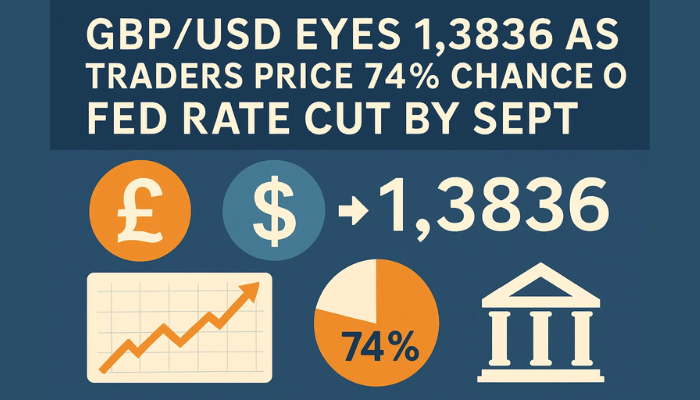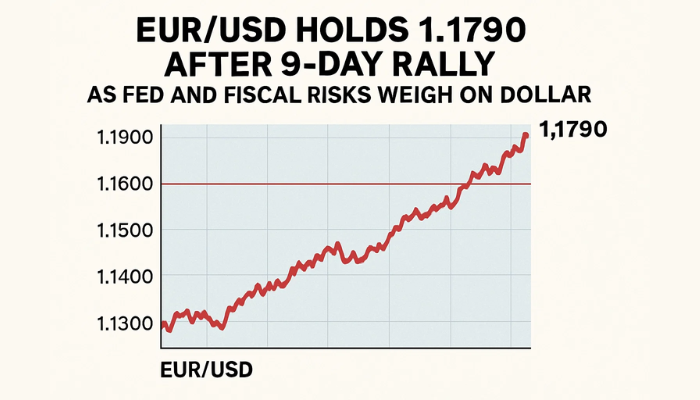Weekly Outlook, Apr 26-30: Top Economic Events to Watch This Week
The broad-based U.S. dollar will end this week on the bearish track as the upbeat market sentiment tends to undermine the safe-haven assets.

The broad-based U.S. dollar will end this week on the bearish track as the upbeat market sentiment tends to undermine the safe-haven assets like the greenback. It is also worth mentioning that the U.S. dollar is still depressed near multi-weeks low as falling gains in U.S. Treasury yields decreased the safe-haven U.S. currency’s interest-rate advantage. Conversely, the losses in the U.S. dollar could be short-lived or temporary as the U.S. stimulus hopes, and the upbeat U.S. data raised hopes over the U.S. economic recovery, which may help the dollar limit its deeper losses. Traders seem cautious to place any strong position ahead of the U.S. Federal Reserve meeting, which is due in the following week.
Looking ahead into the coming week, the series of GDP, along with the FOMC Statement and BOJ Press Conference, can drive plenty of headlines to keep the markets on the move. Apart from this, geopolitical tensions and coronavirus headlines will also be closely followed as they could play a key role in determining risk levels in the market.
Top Economic Events to Watch This Week
1. German Ifo Business Climate – Monday, 9:00 GMT
This data is typically released by the Ifo Institute, which is understood to be highly respected due to its large sample size and historical correlation with German and wider Eurozone economic conditions. It tends to create a strong market impact after release. It is also worth mentioning that it is a crucial indicator of economic health – businesses react instantly to market conditions, and changes in their sentiment can be an early signal of future economic activity such as spending, investment, and hiring.
Apart from this, the Institute surveys more than 7,000 companies to assess the business situation and their short-term planning. In that way, the positive economic growth is seen as bullish for the EUR; conversely, a low reading is understood as negative for the EUR currency.
Previous release
ACTUAL:96.6
DEV:2.38
CONS:93.2
DATE:03/26/2021 09:00
2. Durable Goods Orders – Monday, 12:30 GMT
This data is typically released by the U.S. Census Bureau, which gauges the cost of orders received by manufacturers for durable goods. It means goods planned to last for three years or more, such as motor vehicles and appliances. As those durable products usually require large investments, they are sensitive to the U.S. economic situation. The final figure shows the state of U.S. production activity. Therefore, the high figures are seen as bullish for the USD currency; conversely, low figures are seen as negative or bearish for the USD currency.
Previous release
ACTUAL:-1.1 %
DEV:-1.85
CONS:0.8 %
DATE:03/24/2021 12:30
3. BOJ Monetary Policy Statement – Tuesday, Tentative
This statement is typically released by the Policy Board of the Bank of Japan. By communicating the committee’s vote outcome about interest rates and other policy measures and the economic conditions influencing their decision, the statement gives many hints about future changes in monetary policy. Therefore, a hawkish outlook is seen as positive or bullish for the JPY currency; conversely, a dovish view is seen as negative or bearish for the JPY currency.
ii) – BoJ Interest Rate Decision:
The Bank of Japan typically announces this decision. If the Bank of Japan is hawkish about the inflationary outlook of the Japanese economy and raises the interest rates, it is understood as bullish for the JPY currency. Conversely, if the BoJ is dovish about the inflationary outlook of the Japanese economy and keeps the ongoing interest rate or cuts the interest rate, it is understood as bearish for the JPY currency.
Previous release
ACTUAL:-0.1 %
DEV:0.00
CONS:-0.1 %
DATE:03/19/2021 03:00
4. CB Consumer Confidence – Tuesday, 15:00 GMT
This data is released by the Conference Board, which measures confidence that people have in economic activity. A high level of consumer confidence cites economic development; conversely, a low level drives an economic downturn. In simple words, a high reading is understood as positive or bullish for the USD currency; conversely, a low reading is seen as negative or bullish for the USD currency.
Note: Due to restrictions from the Conference Board, our Economic Calendar does not provide this indicator’s figures.
5. OPEC-JMMC Meetings – Wednesday, All Day
These meetings are attended by representatives from the 13 OPEC members and 11 other oil-rich nations. However, the purpose of this meeting is to coordinate and unify the petroleum policies of its Member Countries and ensure the stabilization of oil markets in efforts to secure an efficient, economical, and regular supply of petroleum to consumers.
They discuss multiple issues concerning energy markets and, most importantly, agree on how much oil they will produce. When the meeting is over, the officials usually talk with reporters throughout the day. As a result, the formal statement covering policy shifts and meeting objectives is released after the meetings have concluded.
6. Fed Interest Rate Decision – Wednesday, 19:00 GMT
i) Fed Interest Rate Decision – The nation’s Central Bank has an economic policy meeting, wherein board members take different measures, the most important one being the interest rate that it will charge on loans and advances to commercial banks. In the U.S., the Federal Reserve Board of Governors meets at intervals of 5 to 8 weeks, in which they declare their latest decisions. In that way, a rate hike tends to underpin the USD currency, as seen as a sign of substantial inflation. Conversely, a rate cut is considered a sign of economic and inflationary woes, which tends to undermine the USD currency.
Previous release
ACTUAL:0.25 %
DEV:0.00
CONS:0.25 %
DATE:03/17/2021 18:00
ii) FOMC Statement – Right after the Fed’s rate decision, the FOMC releases its statement about monetary policy. The statement tends to influence the volatility of USD and determine a short-term bullish or bearish trend. Therefore, a hawkish outlook is seen as positive or bullish for the USD currency; alternatively, a dovish view is seen as negative or bearish for the USD currency.
7. US Gross Domestic Product Price Index – Thursday, 13:30 GMT
Gross Domestic Product Price Index – The Bureau of Economic Analysis typically releases this data, Department of Commerce, which shows the monetary value of all the services, goods, and structures produced within a country in a given period. GDP Annualized is seen as a gross measure of market activity as it helps to measure the speed at which a country’s economy is developing or decreasing. In that way, high figures or better than expected numbers are seen as bullish for the USD currency; conversely, a low reading is considered as negative or bearish for the USD currency.
Previous release
ACTUAL:4.3 %
DEV:0.24
CONS:4.1 %
DATE:03/25/2021 12:30
8. CAD Gross Domestic Product (MoM) – Friday, 13:30 GMT
Gross Domestic Product (MoM) – This data is usually released by Statistics Canada, which gauges the total value of all goods and services produced by Canada. The changes in the GDP price index are considered a broad measure of Canadian economic activity and health. Thus, high figures are seen as positive or bullish for the CAD currency; conversely, a falling trend is bearish for the CAD currency.
Previous release
ACTUAL:0.7 %
DEV:0.97
CONS:0.5 %
DATE:03/31/2021 12:30
- Check out our free forex signals
- Follow the top economic events on FX Leaders economic calendar
- Trade better, discover more Forex Trading Strategies
- Open a FREE Trading Account


